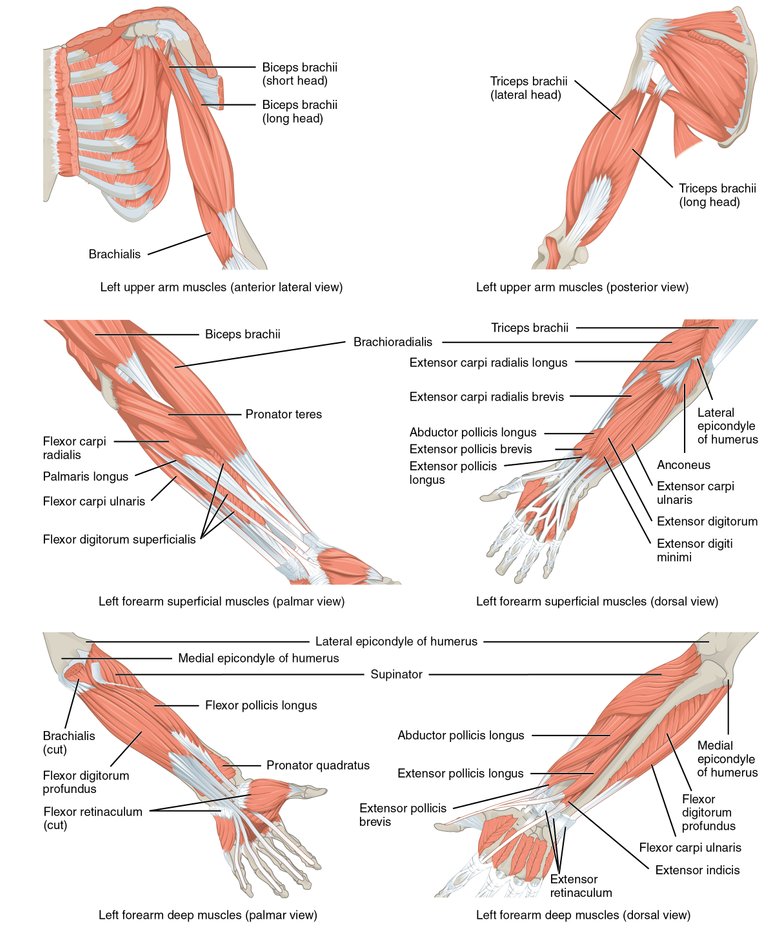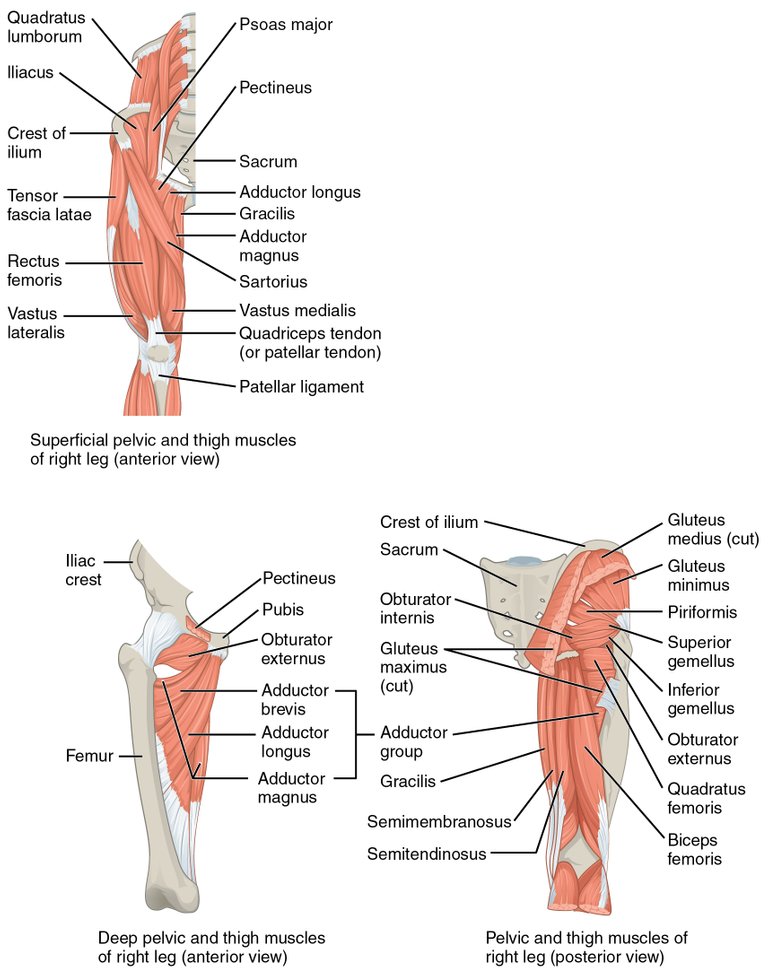Muscle Anatomy of the Upper and Lower Limb
Still, on the muscle of the body and still discussing the skeletal muscle, I will be looking at another area of the body where muscles exist. It is important to know that there are muscles in all parts of our body, and currently, we are still discussing the skeletal muscle. I have talked about the muscles of the head face and neck in one of my posts, and in my previous post, I touched the muscles of the thorax, abdomen, back, and pelvis. Today, I will be looking at the muscles of the upper limb and the muscles of the lower limb, if you are someone who exercises daily, you should have felt the importance of these muscles, so let's begin (just like I mentioned in my previous posts that I will make this particular lesson very easy to read and I am certain I am keeping t my promise).
I will be starting with the upper limb, and in the upper limb, I will be starting with the Pectoralis Major which is the muscle that flexes the entire arm at the shoulder joint, adducting and medially rotating the arm at the shoulder joint. The deltoid muscle is another muscle in the upper limb, and it is made up of the anterior, middle, and posterior head. The deltoid muscle performs flexion, abduction, and extension of the shoulder joint with the anterior, middle, and posterior head respectively.. The Supraspinatus muscle which is located at the superspinous fossa, which inserts into the supraspinatus tendon allows for the abduction of the shoulder. Below the deltoid muscles are deep muscles known as the infraspinatus muscle which laterally rotates the arm back externally. In the shoulder also is the Teres Minor which also performs the action of lateral rotation of the arm. Also in the shoulder joint is the Teres major which extends the arm and medially rotates it towards the shoulder joint. In the shoulder also, towards the anterior side of the scapula is the subscapularis muscle which performs internal rotation by pulling the arm forward. The Latissimus Dorsi is responsible for the medial rotation and adduction of the shoulder joint. In the shoulder, another muscle that attaches to the coracoid process is the coracobrachialis muscle which runs to the arm allowing it to flex the shoulder joint and the adduction of the shoulder joint.,, ,.

In the arm is the biceps brachii muscle where its short head attaches to the coracoid process, and the other head of the muscle which is longer attaches to the supraglenoid tubercle is responsible for flexion of the forearm, and flexion at the elbow. The long head of the biceps is responsible for the supination of the palm as well as the flexion of the forearm. Also towards the elbow is the brachialis muscle which is responsible for the flexion of the forearm and the elbow.,,. In the posterior part of the arm are the triceps muscles which are the lateral head of the triceps, the medial and the long head of the triceps, to form the triceps brachii which is responsible for the extension of the forearm, just as the anconeus muscle which attaches the humerus and ulna also allows for the extension of the forearm. Also, in the forearm is the brachioradialis which allows for the flexion of the elbow or the forearm. In the forearm is the extensor carpi radialis longus which extends the wrist along with the extensor carpi radialis brevis. Close to the digits is the Extensor digiti minimi which extends the digits of the hand, also the extensor carpi ulnaris which extends the wrist of the hand.,,. In the flexor side of the arm are muscles which includes the pronator teres which pronates the palm, the Flexor carpi radialis which flexes the wrist, the Palmaris longus which flexes the wrist, and the flexor carpi Ulnaris which also flexes the wrist of the hand.. One deep muscle in the arm is the flexor digitorum superficialis which flexes the digits and the wrist, and a deeper muscle below the flexor digitorum superficialis is the Flexor pollicis longus which flexes the pollex, and the flexor digitorum profundus which flexes the digits of the finger, and finally, the supinator muscle which helps to supinate the forearm and palm.,. Towards the thumb, is the thenar muscle which comprises of the Opponens pollicis, the abductor pollicis brevis, [Flexor pollicis brevis], and the adductor pollicis brevis, and depending on their names, they abduct, adduct, and flex the thumb..

In the lower limb, which is the muscle of the leg are muscles that allow the leg to perform its function. These muscles include the Psoas major muscle which is responsible for hip flexion. Going downwards is the iliacus muscle which sits in the iliac fossa, and is responsible for flexion of the hip. The next muscle I will discuss is the longest muscle in the body, known as the Sartorius muscle which flexes the entire leg at the hip, flexes the knee, as well as enable lateral rotation of the leg. At the upper part of the lower limb is the tensor fasciae latae which helps with flexion at the hip, medial rotation, and the tensing of the iliotibial tract. The Quadriceps femoris muscle is a group of muscles that include the rectus femoris which flexes the entire leg at the hip joint, and extension of the leg at the knee, the vastus medialis which is responsible for the extension of the leg, at the knee, the Vastus lateralis which also extends the leg at the knee, and the Vastus intermedius and it also extends the knee. Still at the upper part of the lower limb is the Gluteus maximus muscles which perform extension and lateral rotation at the hip joint, still at the region is the gluteus medius which helps with the abduction of the hip, and also the Gluteus Minimus which also performs abduction in the hip joint. There are lateral rotator muscles at the hip, and they are Piriformis, the Superior Gemellus, and the Obturator internus muscle. At the hamstring muscles are muscles that include the bicep femoris muscle which performs extension at the hip joint and flexion at the knee joint. Other muscles in the femur include the semitendinosus, Semimembranosus muscle and they perform the same function as the Biceps femoris. ,,,,.
Image Reference
Image 1 || Wikimedia Commons || Muscles that Move the Forearm
Thanks for your contribution to the STEMsocial community. Feel free to join us on discord to get to know the rest of us!
Please consider delegating to the @stemsocial account (85% of the curation rewards are returned).
Thanks for including @stemsocial as a beneficiary, which gives you stronger support.
Thanks for this really helpful